The rock is not plant or animal. She cannot gain strength from the sun, because her nature is alien to the sun. She is not drawn to the warm and the living, because her nature is neither warm nor alive. She lives thanks to the fact that she sucks up the remains of juices from whatever dies, whatever is decaying and soaking into the earth. She is the life of death, the life of decay, the life of whatever has died. This She that we propose is the life of whatever has died, a process of undoing the illusory stability of fixed identities, bursting open the bubble of ontological security—a vertiginous progression toward deconstructing the self; molecularization of the self.
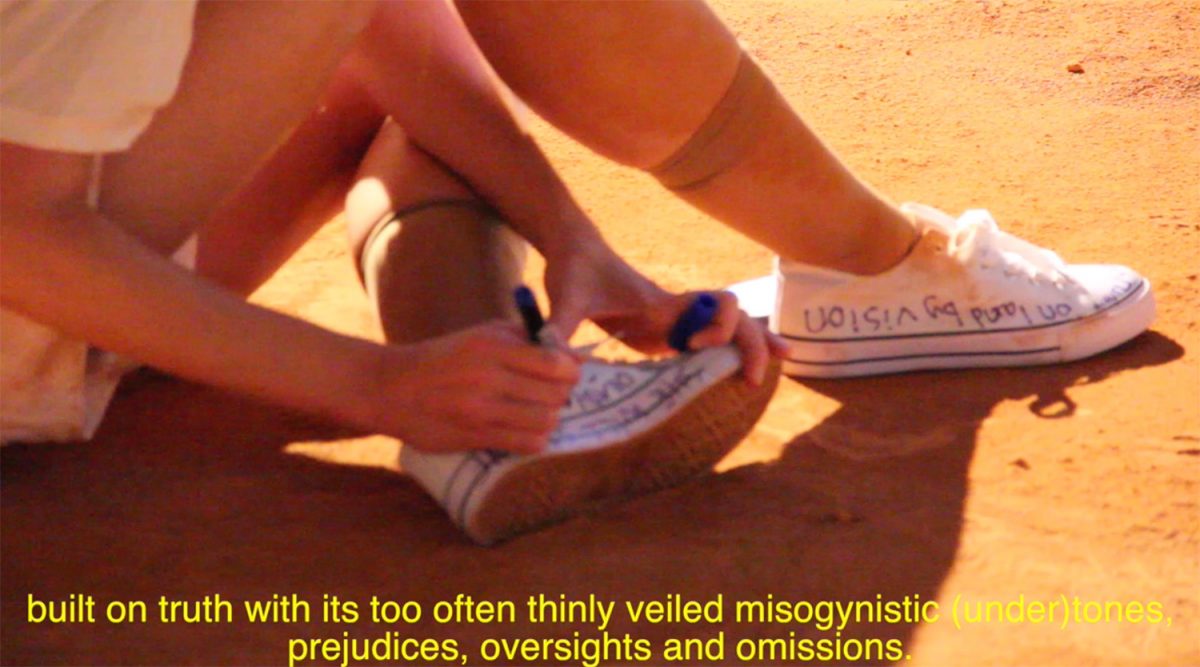 DOROTA GAWĘDA & EGLĖ KULBOKAITĖ, YGRG 14X: reading with the single hand, 2018 (29:56). Sound mix: Brooklyn Bridge. Video stills
DOROTA GAWĘDA & EGLĖ KULBOKAITĖ, YGRG 14X: reading with the single hand, 2018 (29:56). Sound mix: Brooklyn Bridge. Video stills
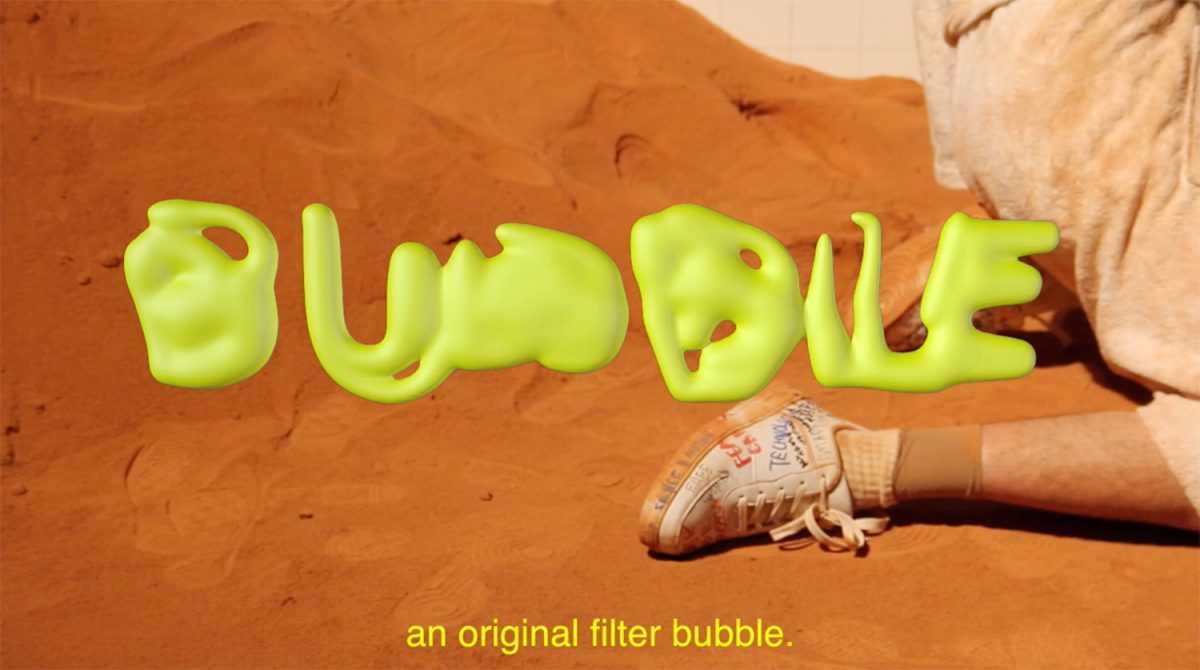 DOROTA GAWĘDA & EGLĖ KULBOKAITĖ, YGRG 14X: reading with the single hand, 2018 (29:56). Sound mix: Brooklyn Bridge. Video stills
DOROTA GAWĘDA & EGLĖ KULBOKAITĖ, YGRG 14X: reading with the single hand, 2018 (29:56). Sound mix: Brooklyn Bridge. Video stills
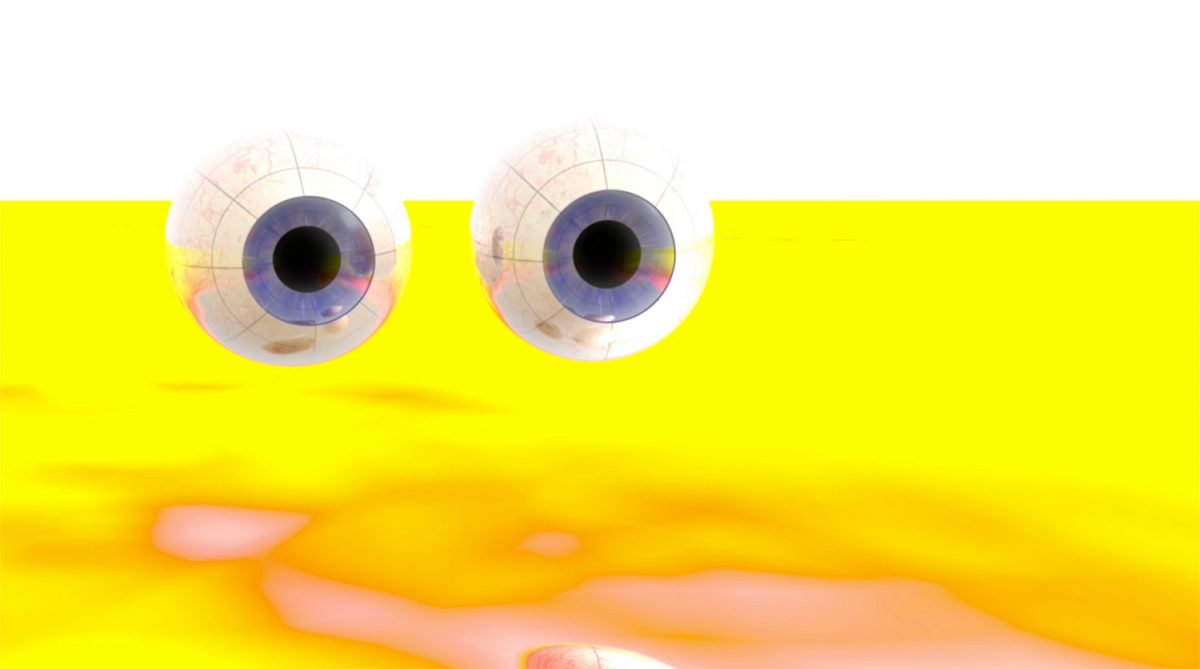 DOROTA GAWĘDA & EGLĖ KULBOKAITĖ, YGRG 14X: reading with the single hand, 2018 (29:56). Sound mix: Brooklyn Bridge. Video stills
DOROTA GAWĘDA & EGLĖ KULBOKAITĖ, YGRG 14X: reading with the single hand, 2018 (29:56). Sound mix: Brooklyn Bridge. Video stills
We see the act of reading as an intimate experience that can be shared; this is our way of creating a community. The spatial settings we create suggest a physical augmentation of the experiencing of the text and offer a focus for considering the relationship between the body, the gesture, the text being read and the surrounding objects and environment. In our performances, i.e
YGRG 14X: reading with a single hand series presented among other locations at Cell Project Space in London and
This Site Is Under Revolution, 6th Moscow Biennial, the readers are placed in casual lounging positions, bringing to mind bodies hanging out in bedrooms—through this a sense of intimacy and vulnerability is generated. Bodies here become fragmentary and spliced merging into one another as well as into landscape. What’s produced is a sense of girl-on-the-internet catharsis—feminist theory rubs against ‘girlish’ reading practices, signaling a move towards de-institutionalizing the texts we work with. We aim at embodying this language through breaking the hierarchies of perception, shifting the emphasis from visual to a more of an experiential language of smell and sound. Towards de-centering from the gaze.
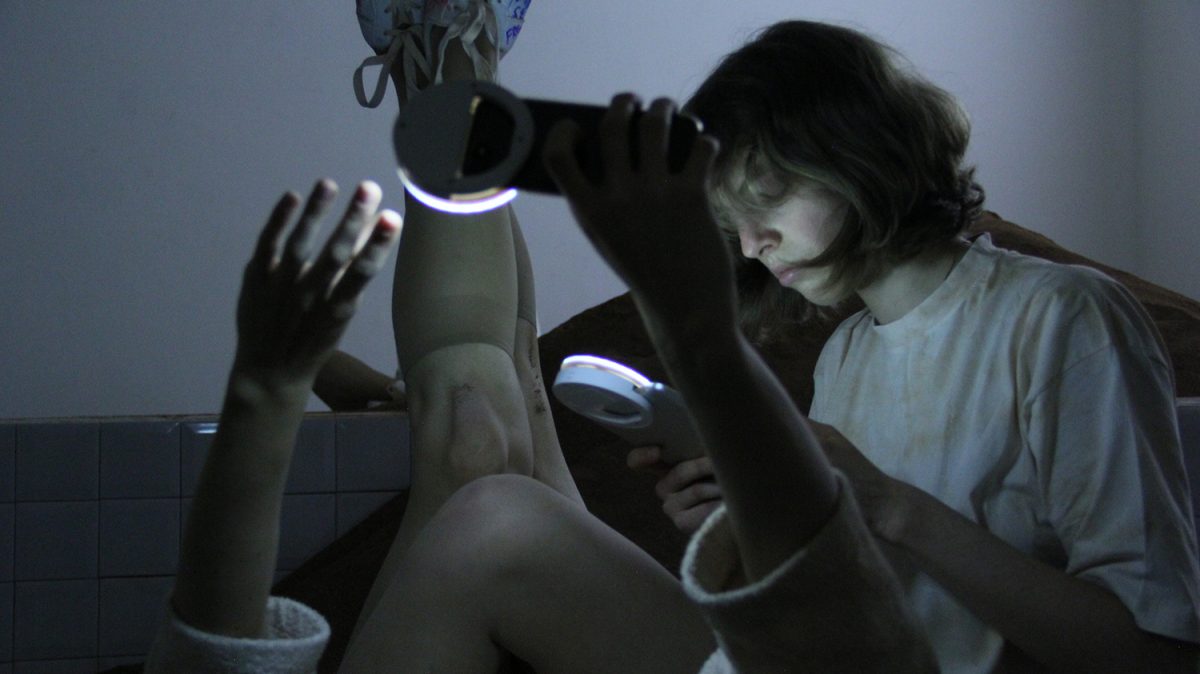 Maria Andreeva, Stacey Batashova, Daria Episheva reading for Dorota Gawęda and Eglė Kulbokaitė’s performance YGRG14X at 6th Moscow Biennale for Young Art, This Site is Under Revolution, curated by Barbara Cueto at Museum of Modern Art, Moscow, 2018
Maria Andreeva, Stacey Batashova, Daria Episheva reading for Dorota Gawęda and Eglė Kulbokaitė’s performance YGRG14X at 6th Moscow Biennale for Young Art, This Site is Under Revolution, curated by Barbara Cueto at Museum of Modern Art, Moscow, 2018
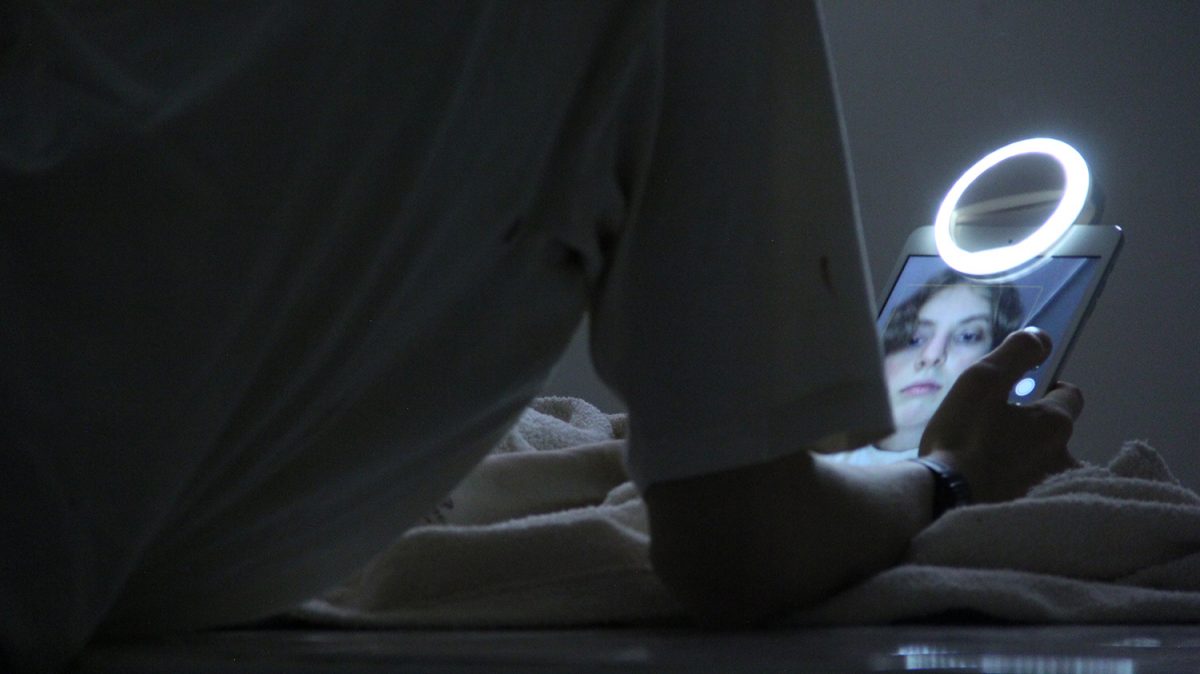 Maria Andreeva, Stacey Batashova, Daria Episheva reading for Dorota Gawęda and Eglė Kulbokaitė’s performance YGRG14X at 6th Moscow Biennale for Young Art, This Site is Under Revolution, curated by Barbara Cueto at Museum of Modern Art, Moscow, 2018
Maria Andreeva, Stacey Batashova, Daria Episheva reading for Dorota Gawęda and Eglė Kulbokaitė’s performance YGRG14X at 6th Moscow Biennale for Young Art, This Site is Under Revolution, curated by Barbara Cueto at Museum of Modern Art, Moscow, 2018
Vitaly Bezpalov: What you talk about makes me think of the ideal internet of the future: decentralized system where your perception is not limited to the visual or textual data and gets fully immersed at the level of all senses. At the same time, such a system would almost completely erase the boundary between the communal and the private, the real and the digital. Your performances seem to have a similar objective—one who is de facto surrounded by strangers in a museum, ought to feel themselves as relaxed as in their private bedroom. What will happen to the boundary between private and public life and how do you feel about what already is happening with it?
Dorota Gawęda and Eglė Kulbokaitė: The book could be defined as a “technology of the self”: a technology of production of subjectivity through discipline and surveillance, but also through identification and pleasure production. Within the boudoir a new technique of the self was born. The “female cabinet” could be understood as the first space where masturbation as a body technique related to the practice of reading took place. According to an early model of industrial capitalism, the modern theories of masturbation defined the body as an economic circuit of energetic fluids that should be used either for production of capital or for sexual reproduction. For the first time, the hand appeared as a new and troubled (genderless) sexual organ that could break into the energetic body circuit causing an unnecessary waste of productive and reproductive fluids. Reading pornographic novels was “lire d’une seule main” (reading with a single hand) which implied that it was the activity of reading itself that moved the “second hand” to touch the body unleashing pleasure. (Paul B. Preciado)
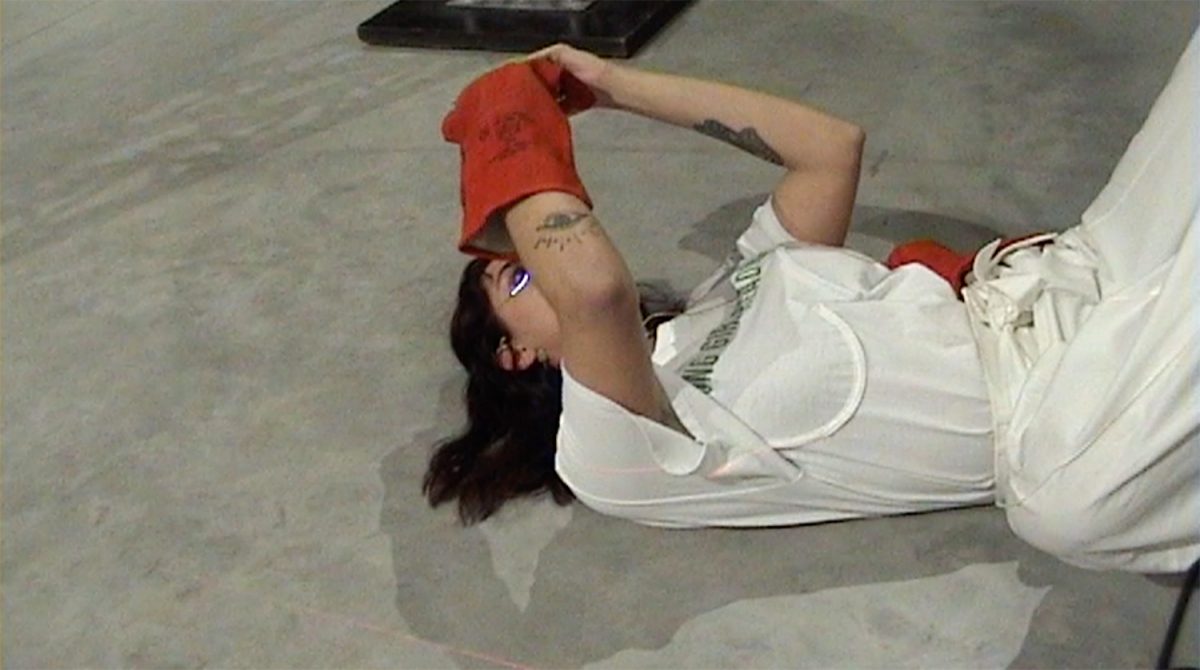 Alexandra Koumantaki, Enrico Boccioletti, Miranda Secondari reading for Dorota Gawęda and Eglė Kulbokaitė’s performance YGRG159: SULK II, Kaleidoscope Takeover, Spazio Maiocchi, Milan, Italy. Costume: Anne Sofie Madsen. Sound mix: Dodomundo.
Alexandra Koumantaki, Enrico Boccioletti, Miranda Secondari reading for Dorota Gawęda and Eglė Kulbokaitė’s performance YGRG159: SULK II, Kaleidoscope Takeover, Spazio Maiocchi, Milan, Italy. Costume: Anne Sofie Madsen. Sound mix: Dodomundo.
The way that reading developed as a solitary practice within the modern society had an influence on desire and the sexual experiences of individuals. The reader developed a virtual and emotional space that separated her from the surrounding physical environment, where the book functioned as an interface. A silent corner, a breach with the surrounding space was where, subjective thought, physical pleasure, and imagination unfolded for the first time with the practice of individual reading.
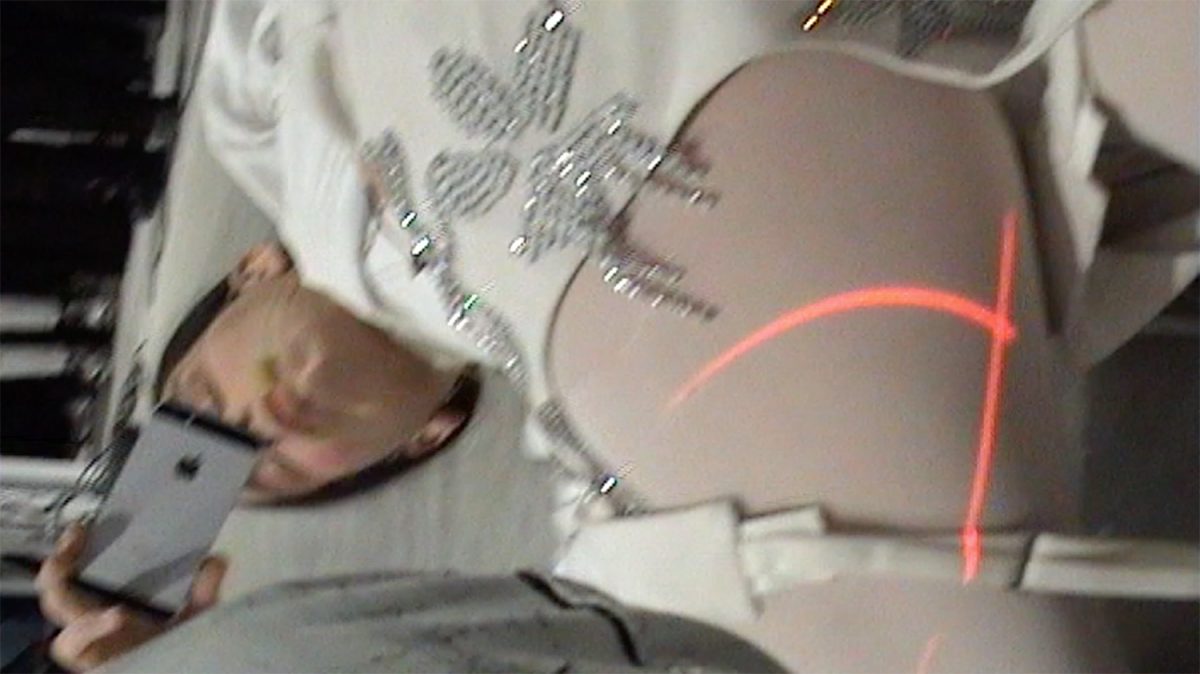 Alexandra Koumantaki, Enrico Boccioletti, Miranda Secondari reading for Dorota Gawęda and Eglė Kulbokaitė’s performance YGRG159: SULK II, Kaleidoscope Takeover, Spazio Maiocchi, Milan, Italy. Costume: Anne Sofie Madsen. Sound mix: Dodomundo
Alexandra Koumantaki, Enrico Boccioletti, Miranda Secondari reading for Dorota Gawęda and Eglė Kulbokaitė’s performance YGRG159: SULK II, Kaleidoscope Takeover, Spazio Maiocchi, Milan, Italy. Costume: Anne Sofie Madsen. Sound mix: Dodomundo
We read together pronouncing the words out loud, emphasizing the relationship of the body of text and the collective body. Creating our performances and installations we are trying to depict a situation where the text can be experienced through a reading that is a shared experience. Here the fantasies of sufficiency and safety are built collectively and within the public domain, but the simultaneous social media presence questions the limits of this experience. The porosity of the queer reading experience enables us to observe the constellations of history as engulfed in capital and governed by an invisible grid of regulated spaces actual and virtual like.
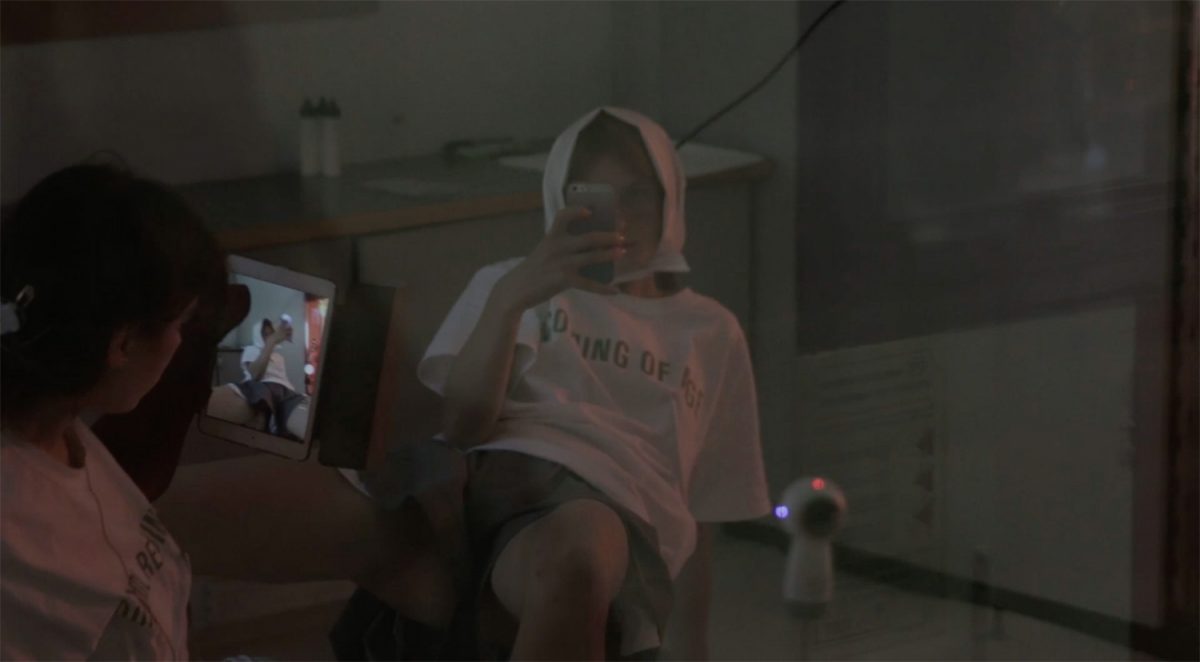 Hara Kiri, Belle Santos and Petros Touloudis performing for Dorota Gawęda and Eglė Kulbokaitė’s performance YGRG159: SULK, ANTI - 6th Athens Biennial, Athens, Greece, 2018. Costume: YGRG and Anne Sofie Madsen. Sound mix: Dodomundo
Hara Kiri, Belle Santos and Petros Touloudis performing for Dorota Gawęda and Eglė Kulbokaitė’s performance YGRG159: SULK, ANTI - 6th Athens Biennial, Athens, Greece, 2018. Costume: YGRG and Anne Sofie Madsen. Sound mix: Dodomundo
In our work, we employ smell to underline that the boundaries between public and private in the digital world are increasingly permeable. At
ANTI - 6th Athens Biennial we presented a new piece titled
YGRG159: SULK (2018), during which the fragrance
RYXPER1126AE was conceived in collaboration with International Flavors and Fragrances Inc in New York. Together with a chemist, perfumer and smell designer from IFF Inc. we produced a synthetic molecular replica of the smell collected during the performance, with the use of headspace technology. This new smell bears a poetic sign or memory of belonging to a certain collective experience, a sentiment to a shared moment. We were interested in treating smell as an olfactory method of documentation of performance and space and the parallels this could offer in observing the passage from virtual to real. Unlike images, scent is nomadic and volatile; when it is released it cannot be fully captured, fully undone. Smell is somehow positioned outside of foregrounded awareness, navigating and activating our internal spaces according to procedures that defy easy explanation. It’s molecules enter spaces, cavities, receptors and makes bodies move certain way, make them orient towards each other. Olfactory perception is as much a sociocultural a phenomenon as it is a physiological one. Scents of all types and the meanings assigned to them contribute to and shape cultures. Having said that, smell is perhaps the only of the five senses that does not have its own substantive, abstract and specific terminology. Marginalisation of olfaction is perhaps most visible in how poorly those sensations translate into words. Additionally, smells are nearly impossible to classify scientifically, defy measurement and are difficult to preserve for a length of time. Smell cannot be transmitted through electronic media. Seemingly operating beyond the reach of everyday cognitive processes and data collection mechanisms smell appears as a potential area of resistance to capital’s absorption. Understanding that it is significantly harder to quantitatively pin down the olfactory as a trackable sensation, we employ smell in the same way as the image documentation, thus problematising the perceived immateriality of smell.
To be in a minority position is something to be pursued, so the fallibility, the lack, the incompleteness of being is to be pursued as a mode of articulating and inventing others. It is a way not to erase the negativity of the condition, but to ask the question: How, from this condition, one can become a woman; what could this be? It is more like an experiment of which you have a partial hypothesis, a conceptual trajectory that has yet to be worked through by discovering proofs. (Luciana Parisi)
I am arguing for politics and epistemologies of location, positioning, and situating, where partiality and not universality is the condition of being heard to make rational knowledge claims. These are claims on people's lives. I am arguing for the view from a body, always a complex, contradictory, structuring, and structured body, versus the view from above, from nowhere, from simplicity. (Donna Haraway)
It is interesting for us to think of smell as a hazy medium that following this same train of thought is speculative. Incompleteness and linguistic ungraspability provides for a different reading of the exhibition. We see role of scent as interface which creates a volatile passage between the virtual dimension and the physical body. Thinking through Foucauldian biopolitics and pharmacopornographic regime (Preciado), we can no longer understand bodies as finite unities but instead fluid, porous cartographies or else distributed networks of corporate agency. (Margarida Mendes).
Through my nose, through your every pore, we change.
And all that you Change Changes me.
Vitaly Bezpalov: By creating the fragrance and pouring it into vials, you actually make visible what was previously ephemeral and thus elusive for data collection or measurement. What becomes visible and distinct enough for capital, loses its resisting force at the very same moment, and becomes apt for capitalistic manipulation. Herein a general problem lies: everything articulated and defined essentially belongs to and depends on capital. Do you see a solution to this problem in regard to your artistic practice, and if so, how would you express it?
Dorota Gawęda and Eglė Kulbokaitė: Bodies like words acquire orientation by repeating some actions over others. What we propose is intimacy for public space. This intimacy of contact shapes bodies as they orient toward each other, doing different kinds of work. Queer desires enact the coming-out story as a story of “coming to,” of arriving near other bodies, as a contact that makes a story and opens up other ways of facing the world. They create spaces, often temporary spaces that come and go with the coming and going of the bodies that inhabit them. (Karen Barad/Sarah Ahmed/Timothy Morton)
We compost our souls in this hot pile. The worms are not human; their undulating bodies ingest and reach, and their feces fertilize our words. Ever since we have been coming to this damp spot, we always lay down on the wet moss. If we lay there for a while, we start to sense in another way. We fall into a waking sleep, and see everything in a completely different way.
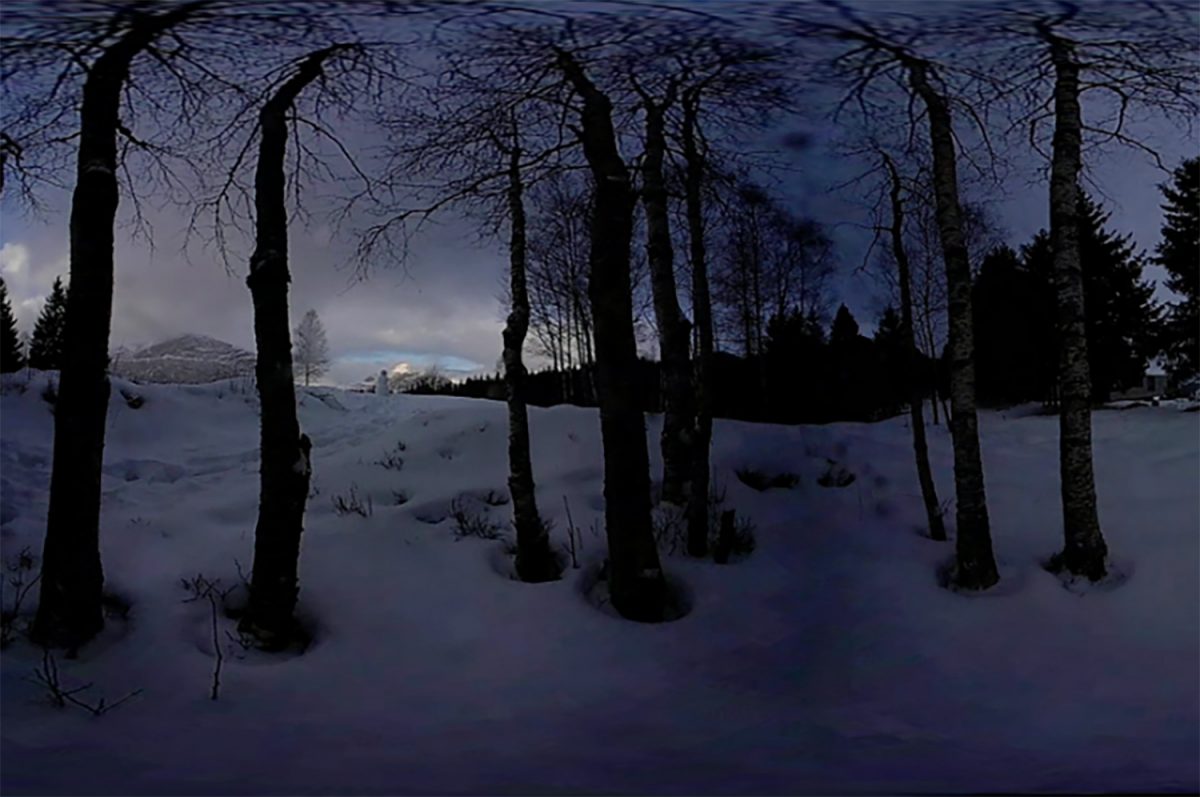 Next 161th YGRG session will be taking place in Berlin as part of The New Weird event at Haus der Kulturen der Welt on 28th of March, 2019
Next 161th YGRG session will be taking place in Berlin as part of The New Weird event at Haus der Kulturen der Welt on 28th of March, 2019
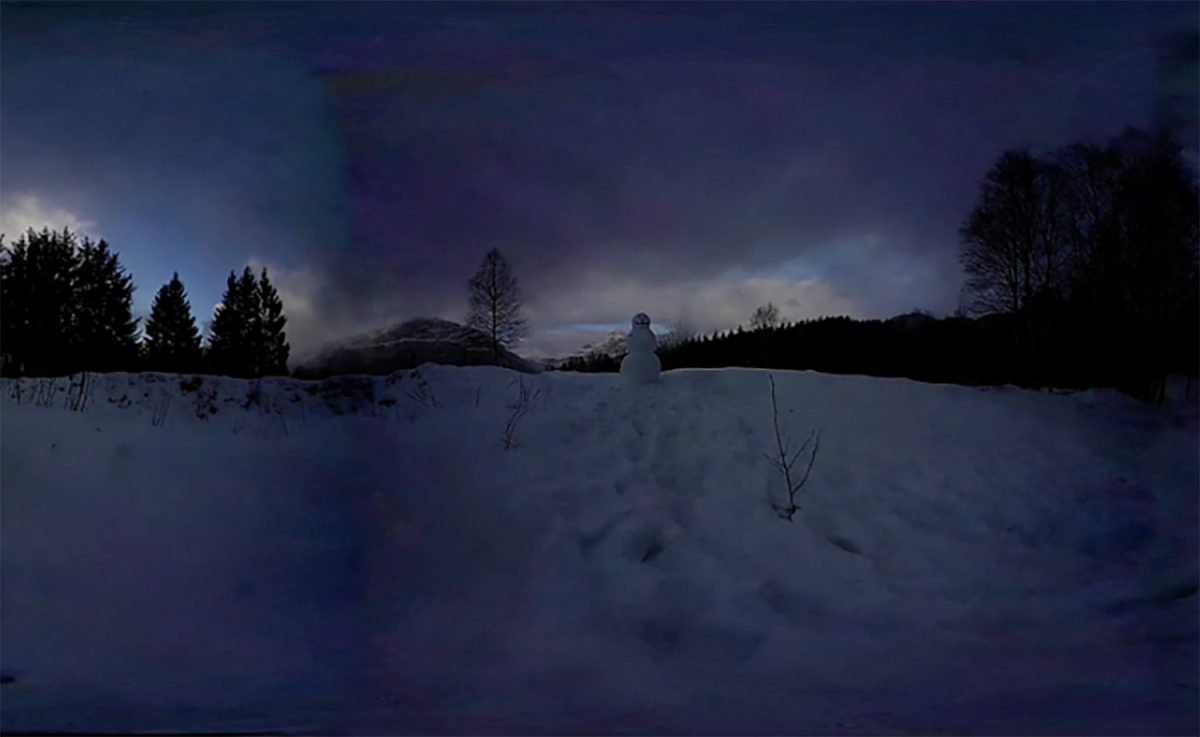 Next 161th YGRG session will be taking place in Berlin as part of The New Weird event at Haus der Kulturen der Welt on 28th of March, 2019
Next 161th YGRG session will be taking place in Berlin as part of The New Weird event at Haus der Kulturen der Welt on 28th of March, 2019
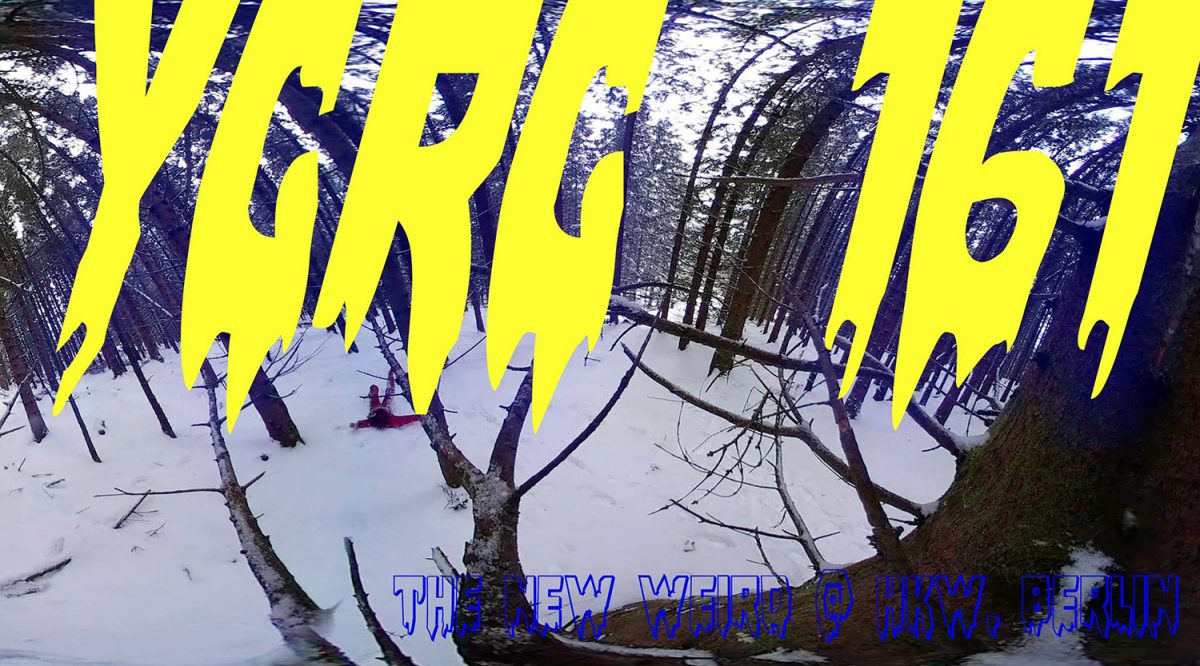 Next 161th YGRG session will be taking place in Berlin as part of The New Weird event at Haus der Kulturen der Welt on 28th of March, 2019
Next 161th YGRG session will be taking place in Berlin as part of The New Weird event at Haus der Kulturen der Welt on 28th of March, 2019
With the use of smell we aim for these temporary spaces of intimacy; we employ scent within our exhibitions unbottled and dissolving, creating the moment audience and performers can share. Recently, at our solo show
I get those goosebumps every time you come around at Lucas Hirsch Gallery in Düsseldorf we had dispersed
RYXPER 1126AE into the space via a fountain. We were sunk into it, part of it. We think of smell as a performative play on the molecular level, conversing with Preciado’s Testo Junkie and underlining the breaking boundaries between us, the other and nature, flowing through and across humans and machines, life-forms and non-life-forms. Throughout the exhibition period, the space was constantly changing, the smell escaping the space and the dissolving the exhibition into a memory. Smell as bodies possess this power to create the unpredictable, the experimental, the new, we believe it a site that can resist the capitalist imposition of universal exchangeability.
Feminist embodiment, then, is not about fixed location in a reified body, female or otherwise, but about nodes in fields, inflections in orientations, and responsibility for difference in material-semiotic fields of meaning. Embodiment is significant prosthesis; objectivity cannot be about fixed vision when what counts as an object is precisely what world history turns out to be about. (Donna Haraway)
On the other hand,
RYXPER 1126AE fragrance helps us to think about and underline the economy of transformative experience, a need for body to legitimise viewer’s aesthetic experience. It is undeniable that the immaterial is on highest demand right now as data collection and surveillance is at the center of the exchange. In Post-Fordist capitalism, as we know, consumers are increasingly drawn to the sphere of the so-called “immaterial”—thoughts, feelings, notifications—as opposed to concrete objects.
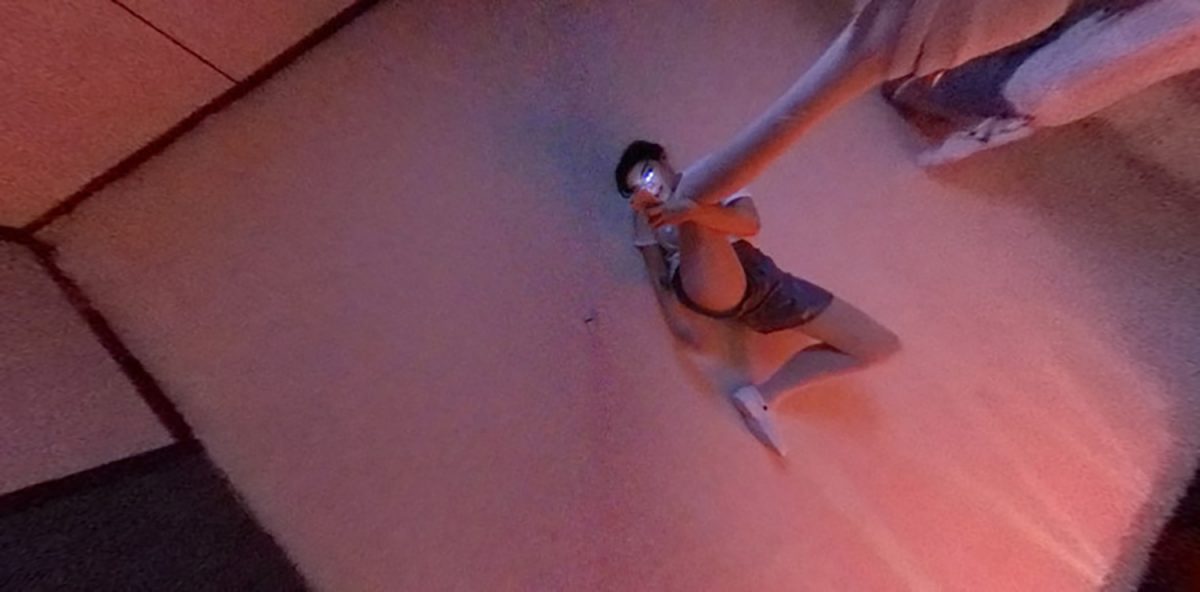 DOROTA GAWĘDA & EGLĖ KULBOKAITĖ, SULK (extract), 2018 Video with sound 15:13. Costume: YGRG and Anne Sofie Madsen. Sound mix: Dodomundo
DOROTA GAWĘDA & EGLĖ KULBOKAITĖ, SULK (extract), 2018 Video with sound 15:13. Costume: YGRG and Anne Sofie Madsen. Sound mix: Dodomundo
If not already firmly in its grip and scope, we subscribe to the megastructure. We willingly provide its layers with our data— we insist to be seen by it, to sign ourselves in. The feedback loop is made of living color—of “reality” on one end, in its multiverse of plurality, its irreducible multiplicity, captured, and then, interfaced, mediated, flattened, simplified, displayed back in cinematic hues of post-technicolor tablets, phones, screens, surfaces, buttons, clickables, splintered into versions. (Metahaven)
In this light, we are trying to play with with this boundary of not-yet-capitalised, on a verge to possible escape. Intimacy and space to be shared together is what we still see potential in queering the way of sharing knowledge.
Natalya Serkova: I actually loved your idea of willing insistence on being transparent for the global data. If you want to properly hide something, you should put it in the most prominent place. Surveillance is intense while you insist on having things to hide. However, as soon as you give up on declaring resistance, you find out that degree of your personal freedom has significantly increased. That’s what I like about contemporary art—objects behave as if they are completely on the side of capital which allows them to freely develop their own alternative logic of assembly and operation. In your opinion, in what direction will the art of our generation evolve? Can we qualitatively change the internal institutional system and ways in which audience perceives art?
Dorota Gawęda and Eglė Kulbokaitė: Or rather we think that that there is something beyond, before us, in front of us, or maybe just by us that can offer an alternate kind of collectivity and exchange. We are more interested in exploring histories and transformations that led to this particular way of being and art making and possibilities and futures towards other ways of thinking through feminist and queer theory.
A history of women and reproduction in the "transition to on capitalism" must begin with the struggles that the European medieval proletariat - small peasants, artisans, day laborers - waged against feudal power in all its forms. Only if we evoke these struggles, with their rich cargo of demands, social and political aspirations, and antagonistic practices, can we understand the role that women had in the crisis of feudalism, and why their power had to be destroyed for capitalism to develop, as it was by the three-century-long persecution of the witches. From the vantage point of struggle, we can also see that capitalism was not the product of an evolutionary development bringing forth economic forces that were maturing In the womb of the old order. Capitalism was the response of thee feudal lords, the patrician merchants, the bishops and popes, to a centuries-long social conflict that, in the end, shook their power, and truly gave "all the world a big jolt." Capitalism was the counter-revolution that destroyed the possibilities that had emerged from the anti-feudal struggle - possibilities which, if realised, might have spared us the immense destruction of lives and the natural environment that has marked the advance of capitalist relations worldwide. (
Silvia Federici)
Both of us were born in Eastern Europe (Lithuania and Poland) and grew up during the tumultuous times of the post-1989 transition to market economy. This personal experience often propels us to think of what if: what if there was/will be a different kind of sociality. Attempting to address the questions relating to gender a
nd the intersections of technology, power and desire, we struggled with the presumption that the lexicons of emancipation in formerly socialist non-libidinal planned societies could be considered via the same prism of Western/capitalist theories of gender.
As theorised by Butler and others in the Western tradition, the notion of gender bears the imprint of … solitariness in its genealogy: gender’s genealogy is the twofold subjugation and emancipatory yearning, but according to Butler, this yearning is generated as a result of ‘initial loss’ of the Other, and is due to the narcissistic internalisation of such loss (i.e. its acceptance). This is the reason why gender is a category of crisis and can be identified with social melancholy. As Butler writes, in melancholy not only is the Other, or the idea, lost from the consciousness, but the very social world in which this loss took place. So the ‘melancholic gender’ not only internalises the lost ideal, but shifts the whole configuration of the social world into individual psyche. (Keti Chukhrov)
As a contra-argument, our collaborations and a lot of our work is a proposal for alternate future scenarios of collective intimacy. Reading together, pronouncing the words out loud, we emphasize the relationship of the body to text and the collective body. And as for where the art of our generation is tending towards, we can only say what we are hopeful for—more collective social and political engagement as well as diversity of practice.
Our short video from last year,
COMING OF AGE, 2018 that addresses moments of transition and orientation towards. Taking the title from Ursula K. Le Guin’s short story
Coming of Age in Karhide, it is constructed as a loop—a promise of transition. However, the video starts again signaling a non-conclusive transformation—a constant change or non-change, en emphasis on process.
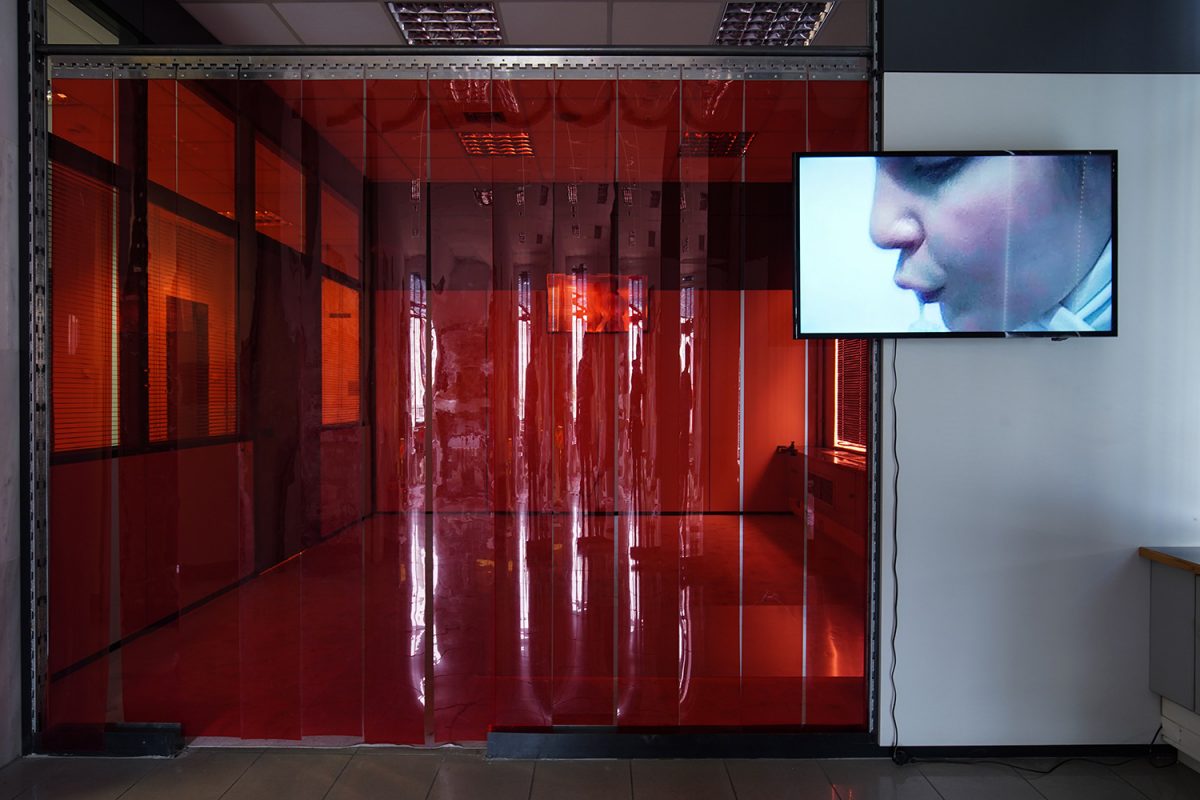 Dorota Gawęda and Eglė Kulbokaitė, COMING OF AGE, 2018. Video (3:00). Sound mix: Dodomundo. Shown as part of the installation at ANTI - 6th Athens Biennial
Dorota Gawęda and Eglė Kulbokaitė, COMING OF AGE, 2018. Video (3:00). Sound mix: Dodomundo. Shown as part of the installation at ANTI - 6th Athens Biennial
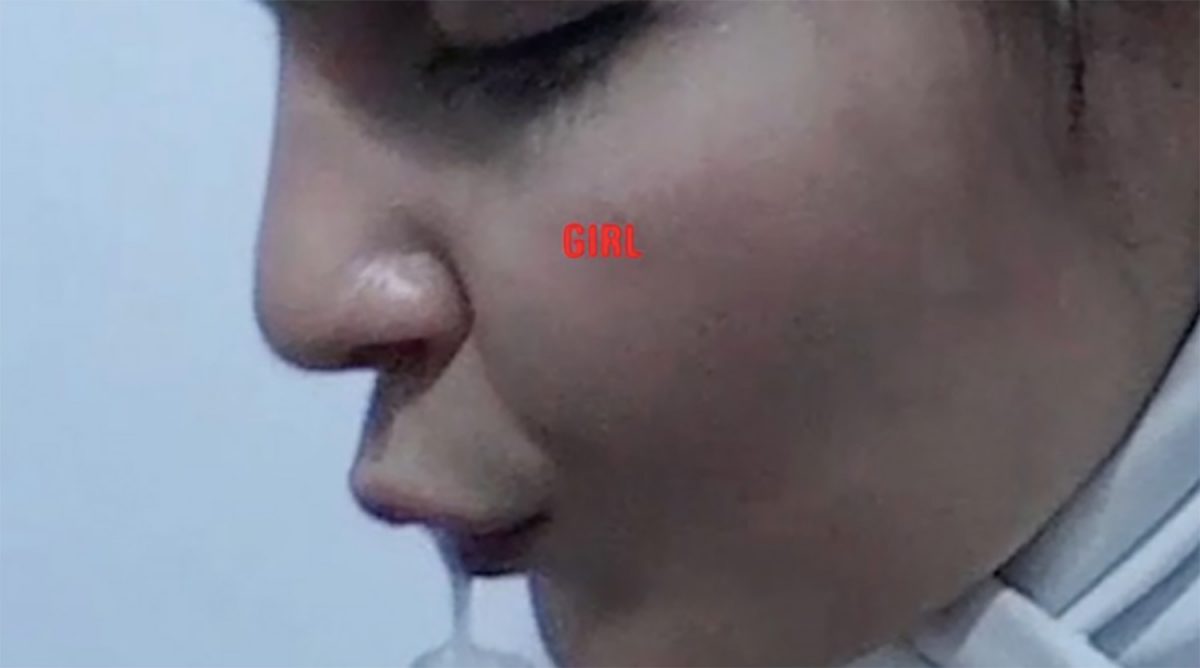 Dorota Gawęda and Eglė Kulbokaitė, COMING OF AGE, 2018. Video (3:00). Sound mix: Dodomundo. Shown as part of the installation at ANTI - 6th Athens Biennial
Dorota Gawęda and Eglė Kulbokaitė, COMING OF AGE, 2018. Video (3:00). Sound mix: Dodomundo. Shown as part of the installation at ANTI - 6th Athens Biennial
I live in the oldest city in the world. Long before there were kings in Karhide, Rer was a city, the marketplace and meeting ground for all the Northeast, the Plains, and Kerm Land. The Fastness of Rer was a center of learning, a refuge, a judgment seat fifteen thousand years ago. Karhide became a nation here, under the Geger kings, who ruled for a thousand years. In the thousandth year Sedern Geger, the Unking, cast the crown into the River Arre from the palace towers, proclaiming an end to dominion. The time they call the Flowering of Rer, the Summer Century, began then. It ended when the Hearth of Harge took power and moved their capital across the mountains to Erhenrang. The Old Palace has been empty for centuries. But it stands. Nothing in Rer falls down. The Arre floods through the street-tunnels every year in the Thaw, winter blizzards may bring thirty feet of snow, but the city stands. Nobody knows how old the houses are, because they have been rebuilt forever. Each one sits in its gardens without respect to the position of any of the others, as vast and random and ancient as hills. The roofed streets and canals angle about among them. Rer is all corners. We say that the Harges left because they were afraid of what might be around the corner.